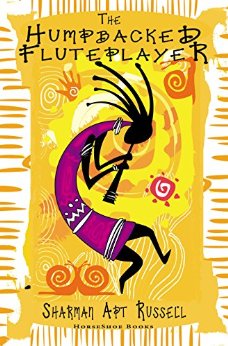From Publishers Weekly
While on a class trip, 12-year-olds May and Evan are mysteriously transported from contemporary Phoenix into a primitive land peopled by six tribes, each of which has its own, innate magical skill. Soon May and Evan discover that these magical powers are fading, and they become caught up in the tribes’ struggles to preserve their strength. In her promising first novel, Russell almost pulls off the feat of blending two subgenres–anthropologically based fantasy and “end of an age” fantasy. Her desert landscapes are richly evocative and the cultures of each of the tribes are suitably distinct. However, the novel falls apart in its final sections, where the action ceases to focus on its young protagonists. Also, Russell consistently refers to her central characters as “children,” or “the children,” which adds a surely unintended patronizing tone to the narrative voice. These reservations notwithstanding, this book marks Russell as a fantasist of real potential. Ages 9-12.
Copyright 1994 Reed Business Information, Inc.
From School Library Journal
Grade 5-7-Miserable after a move from Philadelphia to Phoenix, May, 12, and a classmate, Evan, are flung into a parallel world by a “humpbacked fluteplayer” during a field trip to the desert. In this world live six tribes of people with magical connections to the Earth-Sheep can make things grow; Owls can become owls and fly; Javelinas can control rains. All have only one belief in common-the tribes must not mix. Captured by the Javelinas, May and Evan discover that a fellow slave, Wren, belongs nowhere, and deduce that a seventh tribe must exist. It does, and when the Deer invade the desert, Wren proves to be a treasure: half Owl, half Deer, she holds both of their magics in herself and is the key to peace. Once the children have completed their task-freeing Wren-they are returned to Here by the fluteplayer, and discover that they’ve been gone a mere day in Now-time. Young readers who are willing to persevere with a somewhat two-dimensional cast of characters through their confusions and discomforts will likely take to heart the author’s ideas about helping, caring, and sharing. It is a pity that the fluteplayer is never identified. Still, Russell’s evocation of desert survival is strong, and her message makes sense.
Patricia Manning, Eastchester Public Library, NY
Copyright 1994 Reed Business Information, Inc.
Gr. 4-6. Sixth-grader May hates Phoenix. It’s not Philadelphia, her old hometown, and it’s not green. Straying from a field trip, she finds a cave with a pictograph of a humpbacked flute player. Touching it sends May and Evan, a classmate sent to find her, to another time zone, where the desert’s heat and aridity rule and six tribes struggle to survive. Enslaved by one of the tribes, May and Evan escape with two other young slaves and eventually become part of a new alliance among the tribes. By the time they return to their own world, May has learned good things about the desert and about herself. She has also learned that although each tribe has special strengths, it needs to work with other tribes in order to survive. Tie this into units on desert ecology and Native American legends. Mary Harris Veeder
‹


